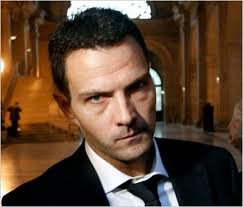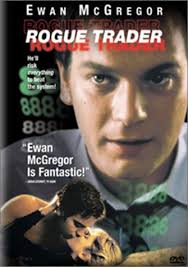3 Of The Worst Traders Ever
Jerome Kerviel
Losses 8.2 Billion over 2 years

I know this guy looks like Liev Schreiber’s doppelganger but Jerome Kerviel was a French trader for Société Générale and racked up close to 8 billion in trading losses between 2007 and 2008. Jerome purchased futures contracts on the Euro Stoxx 50 and the FTSE 100. During the 2008 financial crisis many of these stock bets turned sour. Jerome, like many traders immediately tried to make back the huge losses by doubling up on his positions. Of course , large institutions have risk management protocols in place but Jerome, like many rouge traders was able to manipulate the system and hide his loses by using the knowledge he gained while working in the office that monitored Société Générale traders prior to being promoted to a trading position
The Scam
Jerome would hide his losses across multiple accounts and used the same manipulation tactics to access over 50 billion of Société Générale trading capital. Jerome would hide hundreds of thousands of trades behind offsetting faked hedge trades. He would close the trades in just two or three days, just before the trades’ timed controls would trigger notice from the bank’s internal control system, and Kerviel would then shift those older positions to newly initiated trades Jerome was allegedly able to continue this until a basic slip-up in January 2008, when he failed to disable the bank’s automatic alert system and his irregular trading suddenly showed up.
The Fallout
Mr Kerviel eventually went to trial in June 2010 and was found guilty of forgery, breach of trust and unauthorized computer use. As a result, Mr Kerviel was sentenced to three years imprisonment and ordered to repay the 4.9 billion.
The Payoff
Jerome Kerviel never profited from his scam and was paid a modest salary from Société Générale of 75,000 a year. However like most popular fraudsters Mr Kerviel has made more money after the scam from book deals, movies and public appearances than he ever made working for Société Générale.
Nick Lesson
1.4 Billion in losses over 2 years

Nick Lesson was a former derivatives broker whose fraudulent, unauthorized speculative trading caused the spectacular collapse of Barings Bank, the United Kingdom’s oldest investment bank. From 1992, Leeson made unauthorized trades that at first made large profits for Barings. However, his luck soon went sour and he used one of Barings’ error accounts (accounts used to correct mistakes made in trading) to hide his losses. The account was numbered 88888 – 8 being a number considered to be very lucky in Chinese numerology. Leeson claims that this account was first used to hide an error made by one of his colleagues.
The Scam
The beginning of January 1995, Leeson placed a short straddle in the Singapore and Tokyo stock exchanges, essentially betting that the Japanese stock market would not move significantly overnight. However, the Kobe earthquake hit early in the morning on 17 January, sending Asian markets, and Leeson’s trading positions, into a tailspin. Leeson attempted to recoup his losses by making a series of increasingly risky new trades, this time betting that the Nikkei Stock Average would make a rapid recovery. However, the recovery failed to materialize. Losses eventually reached £827 million, US$1.4 billion, twice the bank’s available trading capital. After a failed bailout attempt, Barings was declared insolvent on 26 February.
The Fallout
Leeson pleaded guilty to two counts of deceiving the bank’s auditors and of cheating the Singapore exchange, including forging documents. Leeson was sentenced to six and a half years in Changi Prison in Singapore, he was released from prison in 1999, having been diagnosed with colon cancer, which he survived despite grim forecasts at the time. Leeson has claimed to never have profited from this scam but several investigators have claimed to have found as much as 35 million dollars in several accounts linked to him
The Payoff

Since leaving prison in 1999 he became the CEO of Irish football club Galway United, appeared in Celebrity Apprentice Ireland, is a paid speaker for large institutions on how to control risk and made millions from his story that was featured in the 1999 film Rouge Trader, staring Ewan McGregor. Life is good when you can take down a bank, walk away with 35 million and have a Hollywood A lister play you in a film.
Toshihide Iguchi
$1.1 billion over 12 years

Formerly an Executive VP and U.S. Government Bond trader at Daiwa Bank’s New York Branch, who was responsible for $1.1 billion in unauthorized trading losses accumulated over from 1983 to 1995. Unlike the previous to fraudsters who had 2 years of trading losses Toshihide Iguchi managed to keep his scam going and his terrible trading for 12 years!
The Scam
In 1983, he lost $70,000 trading Federal Reserve Notes and concealed this loss to protect his reputation and job. He continued trading attempting to recoup the loss; however, his losses snowballed. In July 1989, Iguchi made a $3 billion bet on U.S. Treasury Bonds and lost $350 million. Immediately after this incident, as a result of whistle-blowing by one of the dealers, the New York Fed sent an examiner to look into Daiwa’s bond trading operation, but found nothing. Shortly after, Iguchi was promoted to Executive VP of the New York Branch.
In 1992, during a New York Fed examination, Daiwa concealed it’s trading operation in its downtown office from the examiners by relocating the bond traders to the Branch’s main office in midtown. In 1993, Daiwa voluntarily admitted its falsehood and assured the Fed it was not concealing any impropriety. The Fed conducted a thorough investigation of the operation of the downtown office for two weeks but found nothing unusual. After six months of deliberation at the Federal Reserve Board in Washington, Daiwa received a formal reprimand for their trickery. Despite this incident, both the New York Fed and Japan’s Ministry of Finance, the highest regulatory authorities in the US and Japan, couldn’t detect Iguchi’s more than $1 billion loss.
In September 1995, fearing the damage his losses may cause the bank if discovered, Iguchi wrote a confession letter to the president of Daiwa Bank, Japan detailing what had transpired with the complete detail of all the unauthorized trades he had done during the previous 12 years. By this time, the loss was in excess of $1 billion. Upon receiving this confession letter, Daiwa instructed Iguchi to continue concealing the loss and assist other bank officers in verifying the loss. Two weeks later, Daiwa reported the loss to its regulator, the MOF, which instructed Daiwa not to disclose it for two more months as they were scheduled to announce two major bank failures. Japan was in the midst of the worst financial crisis since the Great Depression, following the burst of the economic bubble of 1980s. However, Daiwa’s US lawyers strongly advised Daiwa to report the loss to the US regulators and on September 18, unbeknownst to Iguchi, Daiwa reported the loss and submitted a criminal referral form on Iguchi along with his confession letter. Meanwhile, Iguchi, who was completely kept in the dark, was working day and night to verify the loss, until he was arrested at his home in New Jersey. With his confession letter in the hands of the FBI, Iguchi had no choice but to admit to the letter.
The Fallout
In 1997, he was sentenced to four years in prison and sent to Allenwood Prison Camp but was released in 1999 .
The Payoff
Since leaving prison Toshihide Iguchi has written a book ” My Billion Dollar Education. Inside The Mind Of A Rouge Trader” He continues to write and appear publicly for speaking engagements on the topics of trader psychology, shattering rogue myths, the role of banks and regulators, and how banks can reduce the risk of rogue trading situation. I don’t know about you but he doesn’t sound like a guy that should be teaching classes on trader psychology.
Doug
You might enjoy these other posts
How To Successfully Buy A Terrible Stock
5 Of The Wealthiest Trades In The World


